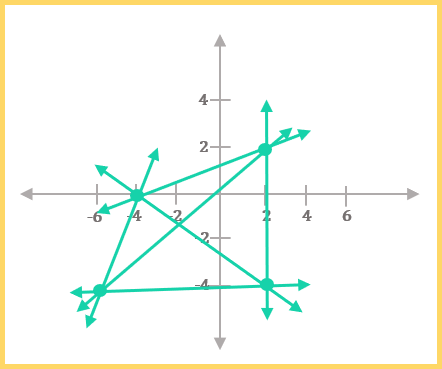What is Geometry?
Are you ready to take your academic journey to the next level? We've got just the thing for you: UPchieve, your ultimate homework help companion! Sign up today for free!
Introduction
Starting a new math class can feel overwhelming, especially when diving into subjects like algebra, geometry, and beyond. Building a strong foundation in these subjects will set you up for success as you progress to more advanced topics like trigonometry and calculus.
What is a simple definition of geometry?
We’ll start with a basic definition. Geometry is defined as “a branch of mathematics that deals with the measurement, properties, and relationships of points, lines, angles, surfaces, and solids.”
Put even more simply, geometry is a type of math that deals with points, lines, shapes, and surfaces. When you hear “geometry,” thoughts of shapes, area, and volume probably come to mind—and that is precisely what geometry is!
Geometry, just like algebra, is built on a mathematical ruleset. In geometry, we refer to these rules as axioms, and there are 5 big ones that you should know.
Key Elements of Geometry: Points, Rays, and Vertices
Geometry is built on some basic components that are essential for understanding shapes and spaces. Let’s break a few of them down:
What is a Point in Geometry?
A point is the most basic building block of geometry. It represents a specific location in space but has no size, width, or depth. Think of it as a dot on a piece of paper—it marks a position, but it doesn’t take up any space.
How Points Are Used:
Points are used to define shapes, lines, and angles.
For example, two points can be connected to form a line, and three points can define a triangle.
What is a Vertex in Geometry?
A vertex (plural: vertices) is the point where two or more lines or edges meet. Think of it as the “corner” of a shape.
Examples of Vertices:
A triangle has three vertices—one at each corner where the sides meet.
A cube has eight vertices—one at each corner of the box.
Vertices are important because they help define shapes and measure angles. For example, when you calculate the angles in a triangle, you're measuring the corners—or vertices—of the shape.
What is a Ray in Geometry?
A ray is like a line, but it has a starting point and goes on forever in one direction. Imagine a laser beam that starts at the source and keeps going—it’s the perfect example of a ray!
How Rays Are Used:
Rays are often used to describe angles. For example, an angle is formed when two rays meet at a vertex. This makes rays a crucial part of understanding geometric figures and measuring their properties.
What are the 5 axioms of geometry?
To get started, let’s break down what an axiom actually is. An axiom is a basic truth or rule that is widely accepted without needing to be proven. In high school geometry, we memorize axioms because they help make problem-solving easier and faster. These simple rules act as the foundation for more complex mathematical ideas.
These 5 axioms of geometry are:
1. A straight line can be drawn between any two points.
Any two points in the same plane, or same flat space, can be connected by a straight line. This axiom is a fancy way of saying that you can “connect the dots.”
2. A straight line can be extended indefinitely.
Straight lines can go on and on—to infinity & beyond!
3. A circle can be made using any point as its center and a line segment as its radius.
This axiom says that you can make a circle around any point in a plane. Its radius will extend from the dot to the edge of the circle, forming a straight line.
4. All right angles are congruent.
We’ll cover congruence in another post, but for now, this just means that all right angles are the same. All right angles are exactly 90 degrees—no more, no less.
5. Parallel Postulate: given a straight line and a point (not on the line), there is always a second straight line through the point that will be parallel to the first line.
This one is a little less intuitive—pictures like the above help to clarify the statement. Essentially, this postulate just means that we can always draw a second line parallel to another line, assuming they’re in the same plane.
Deep Dive into Geometry with UPchieve
Now that you’ve got a solid answer to “What is geometry?” and understand the five key axioms, you’re ready to start building on this foundation. These principles are the starting point for countless theorems and properties, just like how algebra builds upon basic rules and equations. Think of these axioms as your toolkit for tackling more advanced geometry problems in the future.
Have questions about geometry or need help with a tricky concept? Whether it’s about an axiom, a specific problem, or just understanding how to apply what you’ve learned, UPchieve’s tutors are here to support you. Connect with a tutor anytime—it’s as easy as connecting two points on a line!
Prefer to keep exploring on your own? Check out our other math resources on algebra, expressions, radians, and our guide to quadratic equations. And don’t forget to go to UPchieve.org or download the UPchieve app for free, on-the-go homework help whenever you need it—in as little as five minutes!








